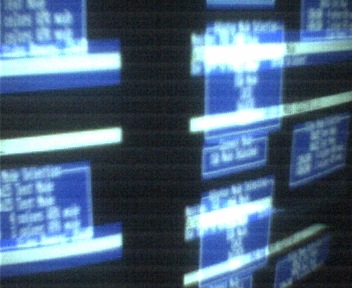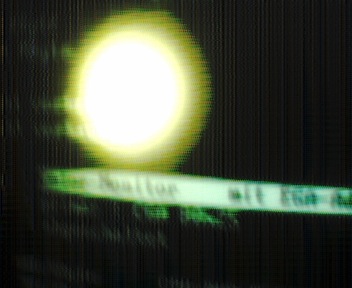Jo22 wrote:Thanks for your understanding! It's been nice talking to you.
Likewise! 😀
CGA not only had 640x200 mono, but also a 640x200 4c mode that never made it due to incomplete decoding.
I had no idea! It's so amazing how I keep learning new things about vintage computers here almost every day. 🤣 But wouldn't a 640x200 4-color mode have required twice the video RAM? And with twice the video RAM, wouldn't CGA have been able to support 16-color graphics in 320x200 mode as well?
On top of that, there was Plantronics and a nice 640x400 mode that was featured by several clones (ex. AT&T, M24, 82c426)
and emulator boards (AT Speed/PC Speed on Atari ?).
Yes, I know that variant well. My Dad's Olivetti M24 was the first computer we had at home. That's the one I grew up with. 😀 By the way, did you know that the CGA compatibility of the Olivetti/AT&T graphics card was incomplete? I my experience, it was damn near perfect, playing pretty much every CGA-compatible game I threw at it. But it did lack the unofficial cyan-red-white palette. It would display games that try to use that palette in the official cyan-magenta-white palette instead. I remember playing the CGA version of Outrun at that fellow student's house I talked about earlier, the one with the EGA system. I don't remember why the game was running in CGA mode even though they had EGA, but I do remember being surprised that the color red was used instead of magenta. Back then I shrugged it off as a glitch, an imperfection in the downward CGA compatibility of EGA. It wasn't until many years later that I found out that the imperfection lied with the M24's CGA compatibility instead. I'm still not convinced I missed out on much by not having that third 3-palette CGA mode on my Dad's computer. After having seen EGA in all its 16-color glory, CGA looked dreadful to me regardless. 🤣 You're right about those hacked 160x100 pseudo-graphics modes, though. The relatively few games that supported it looked so bright and colorful, particularly Moon Bugs. 😀 It's a shame there weren't more games that took advantage of that mode. Although Paku Paku didn't come out until much more recently, I'm sure I would have been blown away by it back in the day.
I've made it my quest to this day to get EGA graphics working on that same M24, using its original monitor. It has proven quite challenging, since that monitor works at a different frequency than an actual CGA monitor, due to its support for a twice as high vertical resolution (640x400 as opposed to 640x200, as you mentioned yourself). I had to track down an EGA card that would specifically support that mode. I ended up getting an EGA Wonder 800 through eBay tha thas a jumper for that mode (25kHz instead of 15kHz, if I recall correctly).
The M24's monitor also lacked another CGA-specific feature, namely the ability to display the color brown. The original IBM CGA monitor had hardware circuitry that would show color 6 as brown instead of dark yellow. The M24's monitor lacked that circuitry and would therefore display color 6 as a somewhat ugly mustard-like dark yellow instead of brown. This means that even if I finally ever get that EGA Wonder card to work with the M24's monitor, EGA games will look different, due to brown being displayed as dark yellow. I wonder how that will look. In many adventure games showing sceneries with a lot of trees and wooden objects, such as the King's Quest games and Monkey Island, I expect this difference to be quite noticeable. Writing all this, the motivation to fix the apparently defective power supply in that M24 is coming back to me. Perhaps it will be a nice project to work on with my Dad in the coming holidays. 😀
By the way, I just tried VGA2EGA picture viewer and found out that there was a 640x200 mode, too! 😀
Do you know if that mode would work on a real CGA monitor, too, if an EGA card was in place ?
It would be the same resolution as for CGA's Hi-res mode (640x200 B/W).
I've always been pretty sure that would be possible. After all, the monitor never cared how many of the maximum 16 colors the graphics card to display on the screen at once. In 640x200 2-color CGA mode, you could freely pick any of the 16 colors as the foreground color, so it was not like CGA monitors were limited to monochrome graphics in that mode or anything.
Some 256-color adventure games by both Sierra and LucasArts supported 16-color 640x200 EGA mode and used the higher resolution of that mode to emulate 320x200 256-color graphics through dithering. The results were surprisingly impressive, although of course they would never reach the same quality as actual 256-color graphics. Also, effects like fade-in/fade-out and color cycling would of course still not be possible on EGA, even at the higher resolution. But still, the idea of playing a game with graphics that were designed for 256-color VGA on a CGA monitor with an EGA card at 640x200 at 16 colors is something that has particularly fascinated me. I think the biggest appeal of that would be the satisfaction of truly seeing a CGA monitor in use at its maximum capability (the highest resolution it supported combined with all the colors it supported being shown on the screen at once).
By the way, this brings me to the one real downside of IBM guaranteeing full downward CGA monitor compatibility in EGA cards, namely the fact that support for custom 16-color palettes out of 64 possible colors would only be activated in 640x350 mode. Support for more than the standard 16-color palette required support for advanced signaling on both the card-side and the monitor-side, which would have broken compatibility with CGA monitors. Had IBM allowed 64-color support in 320x200 and 640x200 modes as well, even at the cost of sacrificing full downward compatibility with CGA monitors, I wonder how far EGA could have been pushed in many games. Especially later on, as EGA cards gained more video RAM, perhaps it would have been possible to support 64 colors at once (not just custom 16-color palettes out of 64 colors) at 320x200 or even 640x200 modes. I believe this would have closed the quality gap with VGA considerably. Perhaps even some innovative company would have eventually released a graphics card that would have been hardware-compatible with EGA monitors, yet software-compatible with 320x200 256-color VGA, by implementing dithering in hardware using a 64-color 640x200 graphics mode. We'll never know what the possibilities would have been. Well, except if someone were to make a variant of the VGA2EGA utility that would assume such a hypothetical 64-color 640x200 EGA-on-steroids mode. 😉
The program is available here (there's also a CGA version).
Thanks for sharing these links here. These should be fun to play with and the VGA2EGA viewer in particular should give a nice idea how well 256-color games could have been made to look in 640x200 16-color mode with dithering. The dithering algorithms have improved a lot since those days, so an even better emulation effect could be achieved these days using the same hardware, methinks.
I'm glad you enjoy discussing these obscure retro PC graphics hardware details as much as I do. 😉




